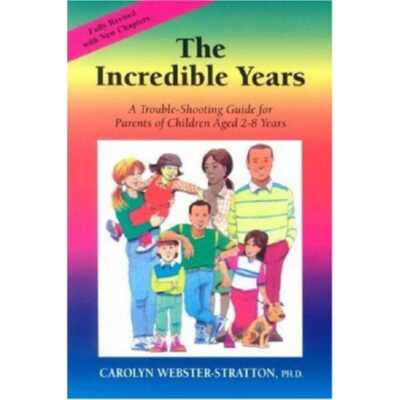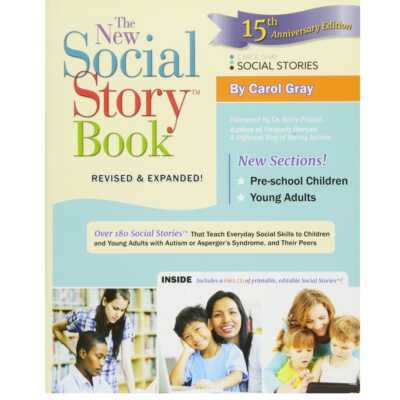The following products can be purchased via other third party organisations e.g. TTS, Hope Education, Amazon etc. Booklets produced by Psychology4Learning Educational Psychologists can be downloaded from our website for a small fee.
-
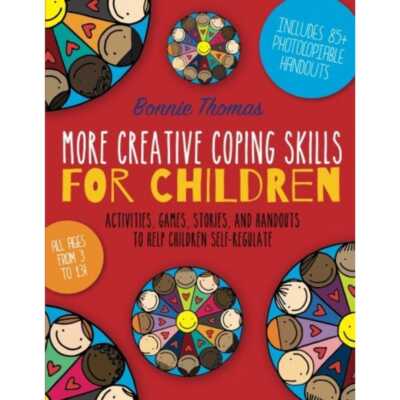 Paperback Published 18 August 2016 by This collection of fun and adaptable activities, games, stories and handouts is a complete resource for supporting children coping with stress and difficult emotions. From engaging arts and crafts, to interactive stories and relaxing meditations, all the interventions and activities are thematically structured so that each chapter contains the means for building specific skills or overcoming behavioral issues. Each chapter contains suggested goals, positive affirmations and photocopiable handouts to enable a child to continue practising and learning new life skills outside of sessions with parents or professionals. The activities in this book are ideal for use with children aged 3-12 to help them rebalance and gain a strong grasp on their emotions.
Paperback Published 18 August 2016 by This collection of fun and adaptable activities, games, stories and handouts is a complete resource for supporting children coping with stress and difficult emotions. From engaging arts and crafts, to interactive stories and relaxing meditations, all the interventions and activities are thematically structured so that each chapter contains the means for building specific skills or overcoming behavioral issues. Each chapter contains suggested goals, positive affirmations and photocopiable handouts to enable a child to continue practising and learning new life skills outside of sessions with parents or professionals. The activities in this book are ideal for use with children aged 3-12 to help them rebalance and gain a strong grasp on their emotions. -
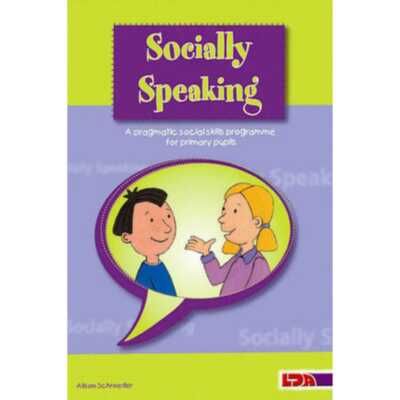 Paperback Published 21 February 1998 by This social skills programme for pupils with mild to moderate learning disabilities, physical and/or medical disabilities and for those with special needs in mainstream education is divided into three units: let's communicate; let's be friends and let's practice. It aims to increase self-esteem and improve listening skills and expressive language abilities. Teacher's notes, photocopiable illustrated pupil worksheets and assessment and evaluation forms are included.
Paperback Published 21 February 1998 by This social skills programme for pupils with mild to moderate learning disabilities, physical and/or medical disabilities and for those with special needs in mainstream education is divided into three units: let's communicate; let's be friends and let's practice. It aims to increase self-esteem and improve listening skills and expressive language abilities. Teacher's notes, photocopiable illustrated pupil worksheets and assessment and evaluation forms are included. -
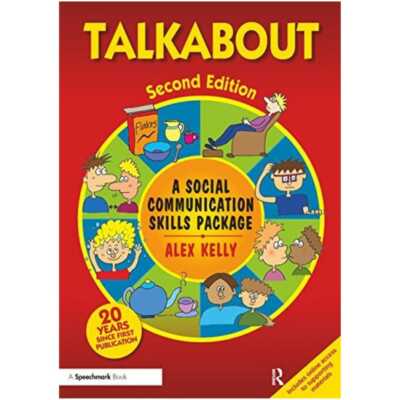 Paperback Published 28 April 2016 by This core Talkabout manual is a practical resource essential for Speech and Language Therapists and other professionals who need to help people with special needs develop social skills. Over 60 activities form an extensive, structured social skills programme that can easily be adapted for use with children, adolescents and adults. Written by bestselling author and practising Speech and Language Therapist, Alex Kelly, this book sits at the centre of an internationally renowned series of resources supporting social skills.
Paperback Published 28 April 2016 by This core Talkabout manual is a practical resource essential for Speech and Language Therapists and other professionals who need to help people with special needs develop social skills. Over 60 activities form an extensive, structured social skills programme that can easily be adapted for use with children, adolescents and adults. Written by bestselling author and practising Speech and Language Therapist, Alex Kelly, this book sits at the centre of an internationally renowned series of resources supporting social skills. -
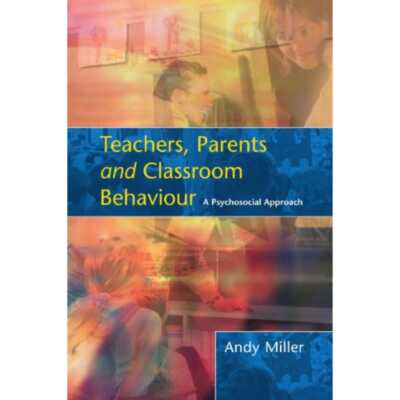 Paperback Published 1 October 2003 by The behaviour of students in schools is a matter of great concern. Legislation, media coverage and 'test cases' are flooding into the public consciousness at an increasing pace. The relative responsibility of teachers and parents is a particularly prominent and contentious issue. This book examines the reasons why strong statements of mutual recrimination and blame often occur in this area, before looking at policies and practices which are co-operative, preventive and proactive in nature. But this is not solely another book of tips and techniques. In addition to describing strategies with a proven evidence base, it also demonstrates, within a coherent framework, how and why these approaches achieve their aims. This book provides an in-depth understanding of key psychological factors for those in schools struggling in this vexed and pressing area and for that widening group of professionals charged with working in partnership to bring about demonstrable change.
Paperback Published 1 October 2003 by The behaviour of students in schools is a matter of great concern. Legislation, media coverage and 'test cases' are flooding into the public consciousness at an increasing pace. The relative responsibility of teachers and parents is a particularly prominent and contentious issue. This book examines the reasons why strong statements of mutual recrimination and blame often occur in this area, before looking at policies and practices which are co-operative, preventive and proactive in nature. But this is not solely another book of tips and techniques. In addition to describing strategies with a proven evidence base, it also demonstrates, within a coherent framework, how and why these approaches achieve their aims. This book provides an in-depth understanding of key psychological factors for those in schools struggling in this vexed and pressing area and for that widening group of professionals charged with working in partnership to bring about demonstrable change. -
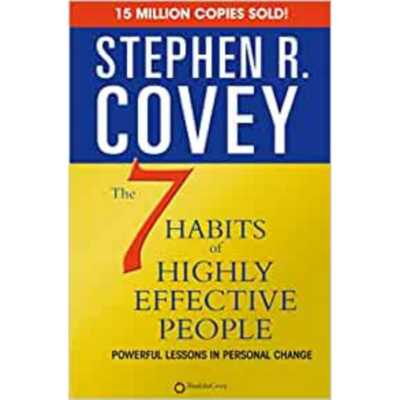 Paperback Published 4 January 1999 by In THE 7 HABITS OF HIGHLY EFFECTIVE PEOPLE Stephen R. Covey presents a holistic, integrated, principle-centred approach for solving personal and professional problems. With penetrating insights and pointed anecdotes, Covey reveals a step-by-step pathway for living with fairness, integrity, honesty and human dignity - principles that give us the security to adapt to change, and the wisdom and power to take advantage of the opportunities that change creates. 'Fundamentals are the key to success. Stephen Covey is the master of them. Buy his book, but most importantly, use it!' - Anthony Robbins, author of UNLIMITED POWER.
Paperback Published 4 January 1999 by In THE 7 HABITS OF HIGHLY EFFECTIVE PEOPLE Stephen R. Covey presents a holistic, integrated, principle-centred approach for solving personal and professional problems. With penetrating insights and pointed anecdotes, Covey reveals a step-by-step pathway for living with fairness, integrity, honesty and human dignity - principles that give us the security to adapt to change, and the wisdom and power to take advantage of the opportunities that change creates. 'Fundamentals are the key to success. Stephen Covey is the master of them. Buy his book, but most importantly, use it!' - Anthony Robbins, author of UNLIMITED POWER. -
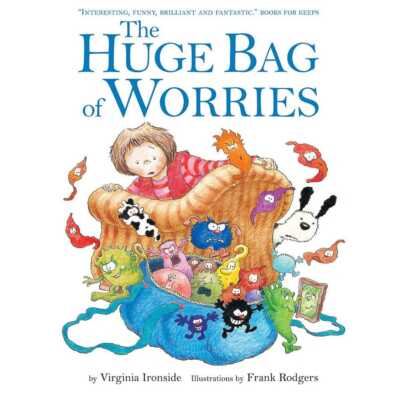 Paperback Published 6 January 2011 by Wherever Jenny goes, her worries follow her - in a big blue bag. They are there when she goes swimming, when she is watching TV, and even when she is in the lavatory. Jenny decides they will have to go. But who can help her? The Huge Bag of Worries was written by Virginia Ironside, one of Britain's leading agony aunts, and has sold 140k copies to date. 'This book can be read millions of times when you are worried.' - Books for Keeps A compelling picture book which can be used as a spring board into what worries children today.
Paperback Published 6 January 2011 by Wherever Jenny goes, her worries follow her - in a big blue bag. They are there when she goes swimming, when she is watching TV, and even when she is in the lavatory. Jenny decides they will have to go. But who can help her? The Huge Bag of Worries was written by Virginia Ironside, one of Britain's leading agony aunts, and has sold 140k copies to date. 'This book can be read millions of times when you are worried.' - Books for Keeps A compelling picture book which can be used as a spring board into what worries children today. -
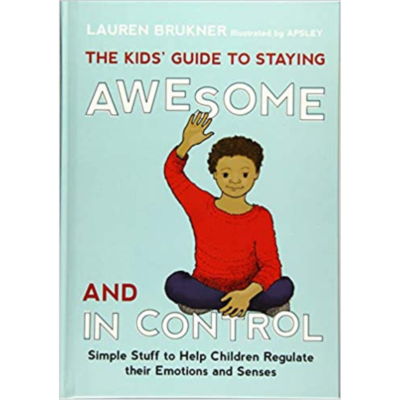 Paperback Published 22 July 2014 by Packed with simple ideas to regulate the emotions and senses, this book will help children tackle difficult feelings head-on and feel awesome and in control! From breathing exercises, pressure holds and finger pulls, to fidgets, noise-reducing headphones and gum, the book is brimming with fun stuff to help kids feel cool, calm and collected. They will learn how to label difficult feelings, choose the perfect strategies and tools to tackle them, and use these correctly whether at home or at school. The strategies and tools are accompanied by cartoon-style illustrations, and the author includes useful tips for parents and teachers as well as handy visual charts and checklists to track learning and progress. Armed with this book, kids will be well on their way to managing difficult emotions and feeling just right in whatever situation life throws at them! Suitable for children with emotional and sensory processing difficulties aged approximately 7 to 14 years.
Paperback Published 22 July 2014 by Packed with simple ideas to regulate the emotions and senses, this book will help children tackle difficult feelings head-on and feel awesome and in control! From breathing exercises, pressure holds and finger pulls, to fidgets, noise-reducing headphones and gum, the book is brimming with fun stuff to help kids feel cool, calm and collected. They will learn how to label difficult feelings, choose the perfect strategies and tools to tackle them, and use these correctly whether at home or at school. The strategies and tools are accompanied by cartoon-style illustrations, and the author includes useful tips for parents and teachers as well as handy visual charts and checklists to track learning and progress. Armed with this book, kids will be well on their way to managing difficult emotions and feeling just right in whatever situation life throws at them! Suitable for children with emotional and sensory processing difficulties aged approximately 7 to 14 years. -
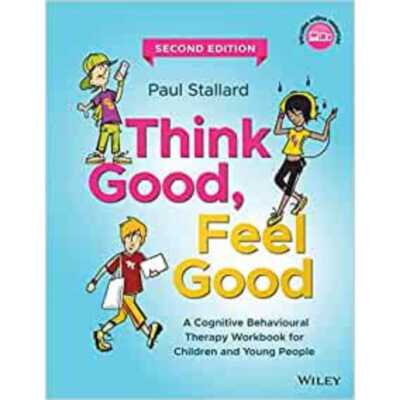 Paperback Published 27 June 2002 by Think Good -- Feel Good is an exciting and pioneering new practical resource in print and on the internet for undertaking CBT with children and young people. The materials have been developed by the author and trialled extensively in clinical work with children and young people presenting with a range of psychological problems.
Paperback Published 27 June 2002 by Think Good -- Feel Good is an exciting and pioneering new practical resource in print and on the internet for undertaking CBT with children and young people. The materials have been developed by the author and trialled extensively in clinical work with children and young people presenting with a range of psychological problems. -
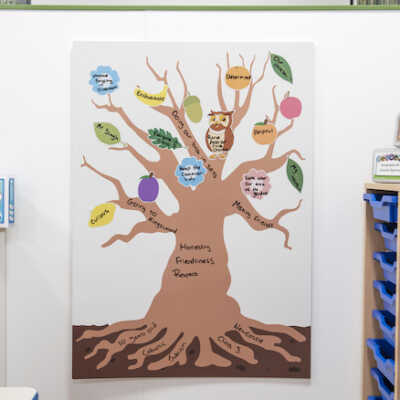 by Educational Psychologist Dr Paula Williams and TTS
by Educational Psychologist Dr Paula Williams and TTSA hard-wearing classroom display, sticker pack and teacher's guide to introduce the Tree of Me to your classroom.
The Tree of Me has been designed to help build children’s sense of identity and belonging and to help them realise the type of person they want to be.
Each part of the tree has two lesson plans, split into 'A' and 'B'. Lesson 'A' introduces the idea of what each part of the tree represents and encourages children to think about how it applies to the whole class (Tree of Us). In lesson 'B', children consider the same ideas, but as individuals (Tree of Me). Refill pack contains: 1 x 'Tree of Me' Flip Book (30 Sheets, A3) and 30 x Set of 'Tree of Me' Stickers (A3) so the resource can be used again and again. Written by Dr Paula Williams, Educational Psychologist. Difference parts of the tree has a different meaning: The Roots - where you come from: home town; country; your heritage; culture; languages that have been important; any early positive experiences, people or places. The Ground - Where you are NOW; things you choose to do on a weekly basis. The Trunk - Your skills and values. The Branches - Your hopes, dreams, and wishes. These can be long and short term. The Leaves - The names of those who are important to you in a positive way. Your friends, family, pets, heroes, etc. The Flowers - Things you can give to people or things you do, acts of kindness, entertaining, teaching. The Fruits - Things that have been given to you, being nurtured and loved; work-ethic; sense of humour; sportiness. A special thank you to Beverley Smalley, TTS Education Consultant for being the co-author on the lesson plans.
-
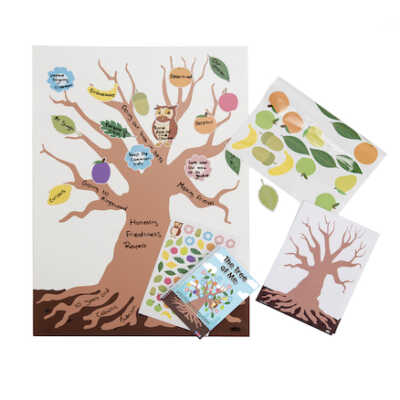 by Educational Psychologist Dr Paula Williams and TTS
by Educational Psychologist Dr Paula Williams and TTSA hard-wearing classroom display, sticker pack and teacher's guide to introduce the Tree of Me to your classroom.
The Tree of Me has been designed to help build children’s sense of identity and belonging and to help them realise the type of person they want to be.
Each part of the tree has two lesson plans, split into 'A' and 'B'. Lesson 'A' introduces the idea of what each part of the tree represents and encourages children to think about how it applies to the whole class (Tree of Us). In lesson 'B', children consider the same ideas, but as individuals (Tree of Me). Refill pack contains: 1 x 'Tree of Me' Flip Book (30 Sheets, A3) and 30 x Set of 'Tree of Me' Stickers (A3) so the resource can be used again and again. Written by Dr Paula Williams, Educational Psychologist. Difference parts of the tree has a different meaning: The Roots - where you come from: home town; country; your heritage; culture; languages that have been important; any early positive experiences, people or places. The Ground - Where you are NOW; things you choose to do on a weekly basis. The Trunk - Your skills and values. The Branches - Your hopes, dreams, and wishes. These can be long and short term. The Leaves - The names of those who are important to you in a positive way. Your friends, family, pets, heroes, etc. The Flowers - Things you can give to people or things you do, acts of kindness, entertaining, teaching. The Fruits - Things that have been given to you, being nurtured and loved; work-ethic; sense of humour; sportiness. A special thank you to Beverley Smalley, TTS Education Consultant for being the co-author on the lesson plans.
-
 by Educational Psychologist Dr Paula Williams and TTS
by Educational Psychologist Dr Paula Williams and TTSA hard-wearing classroom display, sticker pack and teacher's guide to introduce the Tree of Me to your classroom.
The Tree of Me has been designed to help build children’s sense of identity and belonging and to help them realise the type of person they want to be.
Each part of the tree has two lesson plans, split into 'A' and 'B'. Lesson 'A' introduces the idea of what each part of the tree represents and encourages children to think about how it applies to the whole class (Tree of Us). In lesson 'B', children consider the same ideas, but as individuals (Tree of Me). Refill pack contains: 1 x 'Tree of Me' Flip Book (30 Sheets, A3) and 30 x Set of 'Tree of Me' Stickers (A3) so the resource can be used again and again. Written by Dr Paula Williams, Educational Psychologist. Difference parts of the tree has a different meaning: The Roots - where you come from: home town; country; your heritage; culture; languages that have been important; any early positive experiences, people or places. The Ground - Where you are NOW; things you choose to do on a weekly basis. The Trunk - Your skills and values. The Branches - Your hopes, dreams, and wishes. These can be long and short term. The Leaves - The names of those who are important to you in a positive way. Your friends, family, pets, heroes, etc. The Flowers - Things you can give to people or things you do, acts of kindness, entertaining, teaching. The Fruits - Things that have been given to you, being nurtured and loved; work-ethic; sense of humour; sportiness. A special thank you to Beverley Smalley, TTS Education Consultant for being the co-author on the lesson plans.
-
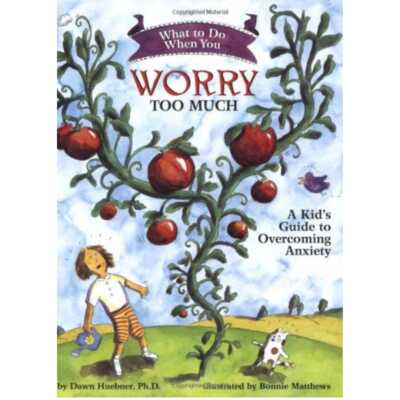
Paperback book
Published 31 Oct 2005
By Dawn Huebner (Author) and Bonnie Matthews (Illustrator) "What to Do When You Worry Too Much" is an interactive self-help book designed to guide 6-12 year olds and their parents through the cognitive-behavioral techniques most often used in the treatment of generalized anxiety. -
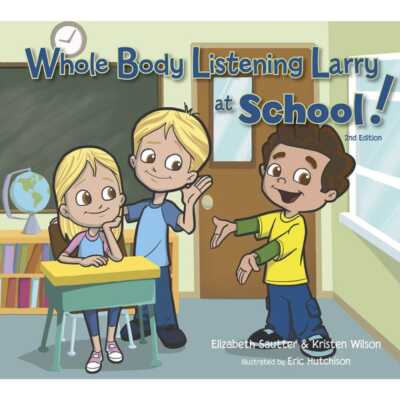 Paperback Published 2011 by
Paperback Published 2011 byThis is our 2nd book in our two-part series to help our students develop a better concept of holistic listening, or Whole Body Listening. In this charming comic book, based on the idea created by Susanne P. Truesdale (1990), the authors, Sautter and Wilson explore how two siblings, Leah and Luka struggle to focus their brains and bodies during the school day. Kindly, a peer mentor helps to explain to these students how they need to use their eyes, hands, feet, heart, brain, etc. to listen in group environments to not only access the information but to work as part of a group. Preschool through 2nd - 3rd grade students love the antics of our characters as they teach this important concept in a very fun manner!
-
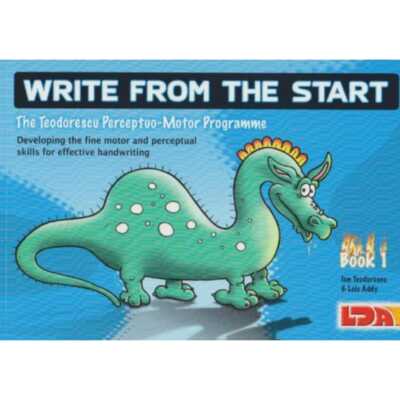 Paperback Published 18 July 1998 By The ability to produce fluent, legible handwriting with ease is something that affects attainment in most areas of the curriculum, yet many children continue to struggle with this vital skill. Based on holistic principles, this programme offers a different approach, developing the muscles of the hand - so that children gain the necessary control to produce letter forms - alongside the perceptual skills required to orientate and organize letter and words.
Paperback Published 18 July 1998 By The ability to produce fluent, legible handwriting with ease is something that affects attainment in most areas of the curriculum, yet many children continue to struggle with this vital skill. Based on holistic principles, this programme offers a different approach, developing the muscles of the hand - so that children gain the necessary control to produce letter forms - alongside the perceptual skills required to orientate and organize letter and words. -
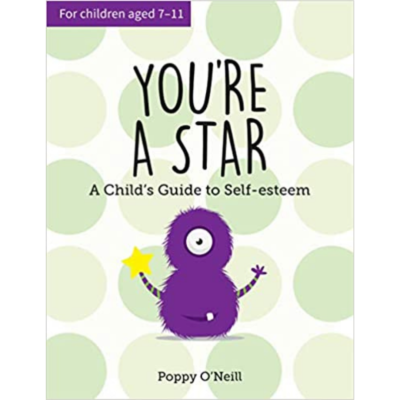 Paperback Published 8 March 2018 by Poppy O'Neill Does your child often feel isolated and do they struggle to get involved in social situations? Are they nervous about what people think of them, or maybe they’re just a little unsure of how they feel about themselves? These could be signs that your child is experiencing low self-esteem. This practical guide combines proven cognitive-behavioural therapy methods used by child psychologists in schools with simple activities to help your child grow their self-esteem. It’s aimed at children aged 7–11 because a lot happens in these years that can impact a child’s sense of self-worth, not just now but for years to come. Your child will be guided, with the help of Bop – a friendly and supportive character they can identify with – through fun and engaging activities which are interspersed with useful tips, inspirational statements and practical information for parents.
Paperback Published 8 March 2018 by Poppy O'Neill Does your child often feel isolated and do they struggle to get involved in social situations? Are they nervous about what people think of them, or maybe they’re just a little unsure of how they feel about themselves? These could be signs that your child is experiencing low self-esteem. This practical guide combines proven cognitive-behavioural therapy methods used by child psychologists in schools with simple activities to help your child grow their self-esteem. It’s aimed at children aged 7–11 because a lot happens in these years that can impact a child’s sense of self-worth, not just now but for years to come. Your child will be guided, with the help of Bop – a friendly and supportive character they can identify with – through fun and engaging activities which are interspersed with useful tips, inspirational statements and practical information for parents.

